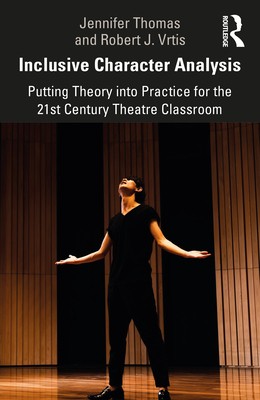
- We will send in 10–14 business days.
- Author: Jennifer Thomas
- Publisher: Routledge
- ISBN-10: 0367358328
- ISBN-13: 9780367358327
- Format: 12.9 x 19.8 x 1.1 cm, minkšti viršeliai
- Language: English
- SAVE -10% with code: EXTRA
Reviews
Description
Inclusive Character Analysis foregrounds representations of race, gender, class, ability, and sexual orientation by blending script analysis with a variety of critical theories in order to create a more inclusive performance practice for the classroom and the stage.
This book merges a traditional Stanislavski-based script analysis with multiple theoretical frameworks, such as gender theory, standpoint theory, and critical race theory, to give students in early level theatre courses foundational skills for analyzing a play, while also introducing them to contemporary thought about race, gender, and identity.
Inclusive Character Analysis is a valuable resource for beginning acting courses, script analysis courses, the directing classroom, early design curriculum, dramaturgical explorations, the playwriting classroom, and introduction to performance studies classes. Additionally, the book offers a reader-style background on theoretical frames for performance faculty and practitioners who may need assistance to integrate non-performance centered theory into their classrooms.
EXTRA 10 % discount with code: EXTRA
The promotion ends in 21d.12:46:51
The discount code is valid when purchasing from 10 €. Discounts do not stack.
- Author: Jennifer Thomas
- Publisher: Routledge
- ISBN-10: 0367358328
- ISBN-13: 9780367358327
- Format: 12.9 x 19.8 x 1.1 cm, minkšti viršeliai
- Language: English English
Inclusive Character Analysis foregrounds representations of race, gender, class, ability, and sexual orientation by blending script analysis with a variety of critical theories in order to create a more inclusive performance practice for the classroom and the stage.
This book merges a traditional Stanislavski-based script analysis with multiple theoretical frameworks, such as gender theory, standpoint theory, and critical race theory, to give students in early level theatre courses foundational skills for analyzing a play, while also introducing them to contemporary thought about race, gender, and identity.
Inclusive Character Analysis is a valuable resource for beginning acting courses, script analysis courses, the directing classroom, early design curriculum, dramaturgical explorations, the playwriting classroom, and introduction to performance studies classes. Additionally, the book offers a reader-style background on theoretical frames for performance faculty and practitioners who may need assistance to integrate non-performance centered theory into their classrooms.


Reviews